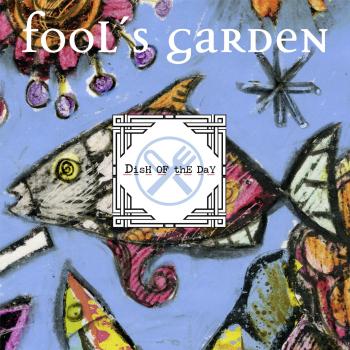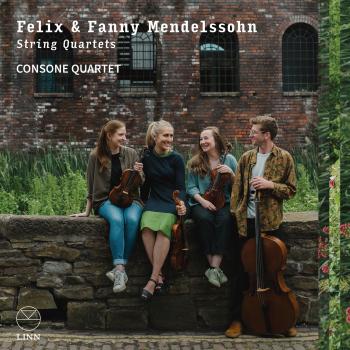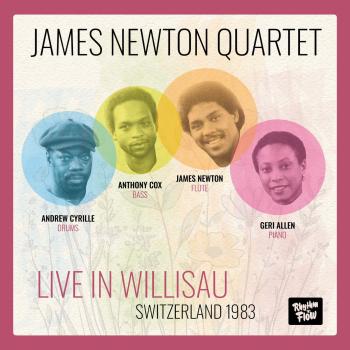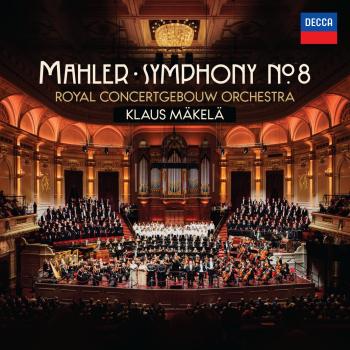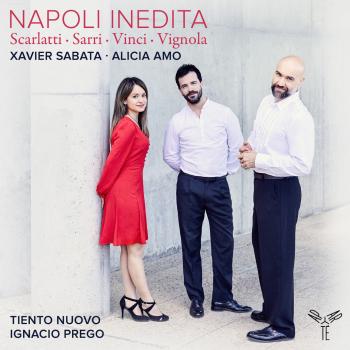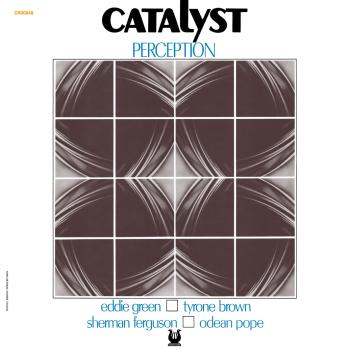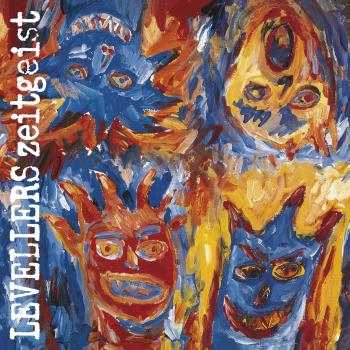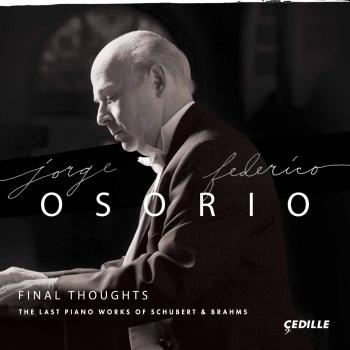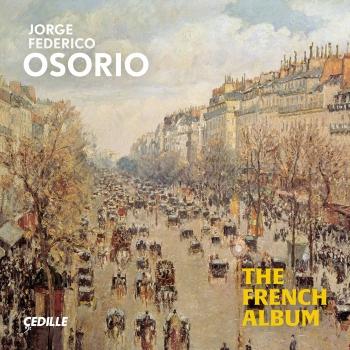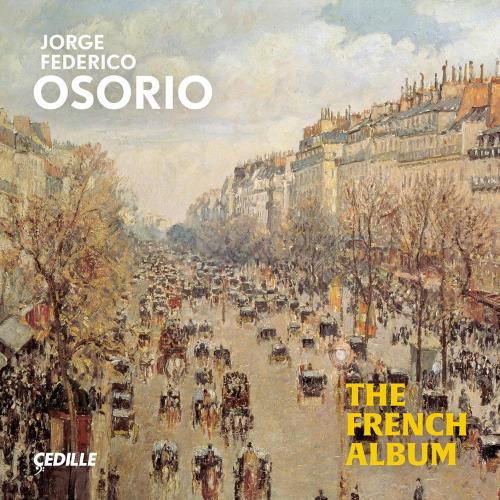
The French Album Jorge Federico Osorio
Album info
Album-Release:
2020
HRA-Release:
14.08.2020
Label: Cedille
Genre: Classical
Subgenre: Instrumental
Artist: Jorge Federico Osorio
Composer: Claude Debussy (1862-1918), Jean-Philippe Rameau (1683-1764), Emmanuel Chabrier (1841-1894), Gabriel Fauré (1945-1924), Maurice Ravel (1875-1937)
Album including Album cover Booklet (PDF)
- Gabriel Fauré (1845 - 1924):
- 1 Pavane, Op. 50 (Version for Piano) 05:53
- Claude Debussy (1862 - 1918): Préludes, Book 1, L. 117 (Excerpts):
- 2 Préludes, Book 1, L. 117 (Excerpts): No. 5, Les collines d'Anacapri 03:09
- 3 Préludes, Book 2, L. 123 (Excerpts): No. 7, La terrasse des audiences du clair de lune 04:34
- Suite bergamasque, L. 75:
- 4 Suite bergamasque, L. 75: III. Clair de lune 05:17
- Préludes, Book 1, L. 117 (Excerpts):
- 5 Préludes, Book 1, L. 117 (Excerpts): No. 7, Ce qu'a vu le vent d'ouest 03:30
- 6 Préludes, Book 1, L. 117 (Excerpts): No. 2, Voiles 03:49
- 7 Préludes, Book 1, L. 117 (Excerpts): No. 10, La cathédrale engloutie 06:36
- 8 Préludes, Book 2, L. 123 (Excerpts): No. 12, Feux d'artifice 04:34
- 9 Préludes, Book 2, L. 123 (Excerpts): No. 2, Feuilles mortes 03:23
- Jean-Philippe Rameau (1683 - 1764): Suite in G Major (Excerpts):
- 10 Suite in G Major (Excerpts): I. Les tricotets 01:33
- Les Indes galantes:
- 11 Les Indes galantes: Menuets I & II (Arr. for Piano) 03:22
- Suite in G Major (Excerpts):
- 12 Suite in G Major (Excerpts): IX. L'egyptienne 02:29
- Emmanuel Chabrier (1841 - 1894):
- 13 Habanera (Version for Piano) 03:51
- Claude Debussy (1862 - 1918): Préludes, Book 2, L. 123 (Excerpts):
- 14 Préludes, Book 2, L. 123 (Excerpts): No. 3, La puerta del vino 03:13
- Estampes, L. 100:
- 15 Estampes, L. 100: No. 2, La soirée dans Grenade 05:08
- Maurice Ravel (1875 - 1937): Miroirs, M. 43:
- 16 Miroirs, M. 43: No. 4, Alborada del gracioso 06:41
- Maurice Ravel:
- 17 Pavane pour une infante défunte, M. 19 (Version for Piano) 06:44
Info for The French Album
Distinguished international pianist Jorge Federico Osorio brings his flair for French music to works of the Baroque, Romantic, and early 20th century eras by Jean-Philippe Rameau, Emmanuel Chabrier, Gabriel Fauré, Claude Debussy, and Maurice Ravel.
Fittingly, Osorio opens The French Album with Faurés exquisite Pavane and concludes with the ever-popular Pavane pour une enfante défunte by Faurés student, Ravel.
The Mexican-born, European-trained pianist offers eight of Debussys pictorial Préludes, each with its unique sound world, including the mystical La Cathédrale engloutie, one of the most stunning pieces ever composed for piano. Another audience favorite is Debussys evocative Claire de lune from his Suite bergamasque. Providing contrast, Rameaus whimsical Les Tricotets conjures the back-and-forth motion of knitting needles.
A set of Spanish-flavored works include Chabriers Cuban-inspired Habanera; Debussys lively La Puerta del Vino, depicting sailors carousing and enjoying their wine, and La soirée dans Grenade, where the piano imitates the sound of a guitar; and Ravels Alborado del gracioso, brimming with Iberian rhythms.
The French Album (Notes by Andrea Lamoreaux):
In the 16th century, the pavane — a genre that opens and closes this program — emerged as an Italian courtly dance, of the formal two-steps-forward-one-step-back pattern for partners who touched only each others’ hands. It made its way into non-dance areas, being used in lute and keyboard music. By the late 19th century, it had become redefined as an evocation of things past, and perhaps the formality of traditional Spanish court customs led to its particular association with that country. (Both Maurice Ravel and choreographer Léonide Massine associated it with the paintings of Diego Velasquez.)
Gabriel Fauré (1845–1924) wrote his Pavane, Op. 50, for solo piano in 1887. His orchestration from later that year may be the more familiar version today, but the piece is exquisite in its original form as a work for solo keyboard. There are Spanish echoes but most evident is Fauré’s astonishing melodic genius, heard so clearly in his solo songs and in the reverent, hushed Requiem Mass.
It took Fauré a long time to earn his living from composition; fortunately, he was a first-rate organist who supported himself with church posts. Also a pianist and teacher, he headed the Paris Conservatory from 1905 to 1920. Perhaps ironically, his appointment was precipitated by a scandal that involved one of his students, Ravel, who’d been repeatedly denied the prestigious Prix de Rome by the hidebound Conservatory faculty. Fauré, initially regarded as a compromise candidate for the top post, energetically reorganized the institution. This Pavane further links him with his student, both of them part of the broad, highly varied, and most distinguished historical path of French keyboard music.
Claude Debussy (1862–1918) was fascinated by the sheer sound of the piano: its whole extended range from highest to lowest, the ways its pedals can change the tone color, the brilliance to be achieved with fast runs, the power of huge chords, all the resonance of this very powerful instrument. This fascination with piano sonority seems to have inspired the creation of his two books of Préludes at least as much as any poem or picture referenced in the preludes’ titles. In fact, he placed the titles at the end of each piece, not the beginning, suggesting that they were, to some extent, afterthoughts. They can be heard as experiments in sound: what are the possibilities of chromatic harmony and non traditional scales? How can Spanish-guitar sounds, musichall tunes, and dance rhythms be incorporated into keyboard miniatures? What colors can the black-and-white keys call forth in the listeners’ imaginations?
The titles come from myriad sources as varied as sculpture, drawings, legends, nature, dance, and poets from Shakespeare to the French symbolists. On this CD we hear eight preludes, drawn from both books, plus two Debussy pieces taken from his other suites and collections.
Virtually everyone knows Debussy’s “Clair de lune,” more evocative of moonlight than even Beethoven’s famous sonata. It comes from Suite bergamasque, which Debussy wrote in 1890 and revised 15 years later. The suite’s title appears to come from a line by French poet Paul Verlaine, alluding to singers and dancers doing “masques et bergamasques.” The term originated as a reference to folk music characteristic of the Italian city of Bergamo. ...
Jorge Federico Osorio, Klavier
Jorge Federico Osorio
has been internationally acclaimed for his superb musicianship, powerful technique, vibrant imagination, and deep passion, and hailed as “one of the more elegant and accomplished pianists on the planet” (Los Angeles Times). He has performed with many of the world’s leading orchestras, including the Symphony Orchestras of Chicago, Dallas, Detroit, Milwaukee, Pittsburgh, Seattle, and the Orquesta Sinfónica Nacional de México; the Israel, Warsaw, and Royal Philharmonics; the Moscow State Orchestra, Orchestre Nationale de France, Philharmonia Orchestra, and Amsterdam’s Concertgebouw Orchestra. Osorio’s concert tours have taken him to Europe; Asia; and North, Central, and South America. He has collaborated with such distinguished conductors as Bernard Haitink, Mariss Jansons, Lorin Maazel, Klaus Tennstedt, Rafael Frühbeck de Burgos, James Conlon, Luis Herrera, Manfred Honeck, Eduardo Mata, Juanjo Mena, Michel Plasson, Carlos Miguel Prieto, Maximiano Valdés, and Jaap van Zweden, among many others. American festival appearances have included the Hollywood Bowl, Ravinia, Newport, and Grant Park Festivals. One of the highlights of Osorio’s long and distinguished career was the performance of all five Beethoven Concertos over two consecutive nights with the Chicago Symphony Orchestra at the 2010 Ravinia Festival. During the past several years, Osorio has performed in Berlin, Brussels, Düsseldorf and Stuttgart; at the Concertgebouw in Amsterdam; and at the Gewandhaus in Leipzig. Recent American recitals have taken him to Boston, the San Francisco Bay Area, and Chicago, where he performed on the prestigious Bank of America Great Performers Series at Symphony Center. Osorio has also given two highly acclaimed New York City recitals at Lincoln Center’s Alice Tully Hall.
A prolific recording artist, Osorio has documented a wide variety of repertoire, including a solo Brahms CD that Gramophone proclaimed “one of the most distinguished discs of Brahms’ piano music in recent years.” Recordings with orchestra include Beethoven’s five Piano Concertos and Choral Fantasy; both Brahms concertos; and concertos by Chávez, Mozart, Ponce, Rachmaninov, Rodrigo, Schumann, and Tchaikovsky. Osorio’s acclaimed solo recordings on Cedille Records include Salón Mexicano, comprising music of Mexican composers Manuel M. Ponce, Filipe Villanueva, Ricardo Castro, and José Rolón; an entire disc devoted to music of Ponce; a 2-CD set of Debussy and Liszt; and Piano Español, a collection of works by Albéniz, Falla, Granados, and Soler that received glowing reviews internationally and marked Osorio as one of the world’s great interpreters of Spanish piano music. Osorio’s recorded work may be found on the Artek, ASV, CBS, Cedille, EMI, IMP, and Naxos labels.
Osorio has won several international prizes and received numerous awards, including the prestigious Medalla Bellas Artes, the highest honor granted by Mexico’s National Institute of Fine Arts; the Dallas Symphony Orchestra’s Gina Bachauer Award; and First Prize in the Rhode Island International Master Piano Competition. An avid chamber music performer, he has served as artistic director of the Brahms Chamber Music Festival in Mexico; performed in a piano trio with violinist Mayumi Fujikawa and cellist Richard Markson; and collaborated with Yo-Yo Ma, Ani Kavafian, Elmar Oliveira, and Henryk Szeryng. A dedicated teacher, Osorio serves on the faculty at Roosevelt University’s Chicago College of Performing Arts. For his own musical education, Osorio began his studies at the age of five with his mother, Luz María Puente, and later attended the conservatories of Mexico, Paris, and Moscow, where he worked with Bernard Flavigny, Monique Haas, and Jacob Milstein. Osorio’s other mentors include Nadia Reisenberg and Wilhelm Kempff. Highly revered in his native Mexico, where he performs often, Osorio resides in Highland Park, Illinois, and is a Steinway Artist.
Mexico National Symphony Orchestra
Founded in 1928 by composer Carlos Chávez, the Orquesta Sinfónica Nacional de México is the most important musical ensemble in Mexico. The orchestra has won numerous awards, including a 2002 Latin Grammy nomination for Best Classical Album. Its principal conductors have included José Pablo Moncayo, Luis Herrera de la Fuente, Sergio Cárdenas, Francisco Savín, Arturo Diemecke and, since 2007, Carlos Miguel Prieto. Legendary musicians who have conducted the orchestra include Heitor Villa-Lobos, Igor Stravinsky, Aaron Copland, Krzysztof Penderecki, Otto Klemperer, Pierre Monteux, Sergiu Celibidache, Leonard Bernstein, and Sir Georg Solti. On its most recent tour, under music director Carlos Miguel Prieto, the orchestra played to great acclaim in the most prestigious halls of Europe, including the Tonhalle in Düsseldorf, Leipzig Gewandhaus, Concertgebouw in Amsterdam, Theatre du Chatelet in Paris, and Palais des Beaux Arts in Brussels, among others.
Carlos Miguel Prieto
An exciting and insightful communicator renowned for his charismatic presence on the conductor’s podium and his versatile command of various composers and styles, Carlos Miguel Prieto is considered one of the most dynamic young conductors on the classical stage today. Music director of the Orquesta Sinfónica Nacional de México and the Orquesta Sinfónica de Minería in his native Mexico, and the Louisiana Philharmonic Orchestra in the United States, Maestro Prieto was named music director of the YOA Orchestra of the Americas in November 2011. In high demand as a guest conductor, Maestro Prieto’s numerous North American guest conducting credits include the symphony orchestras of Chicago, Seattle, Dallas, Toronto, Houston, Indianapolis, Colorado, Vancouver, and San Antonio; the philharmonic orchestras of Florida, New Mexico, Dayton, and Calgary; and every major orchestra in Mexico. He has conducted orchestras throughout Europe, Russia, Israel, and Latin America. Recent debuts abroad include the New Japan Philharmonic in Japan, Frankfurt Radio Symphony Orchestra in Germany, Teatro Colon in Buenos Aires, and the Netherlands Radio Orchestra in Utrecht.
Prieto has made a series of recordings of Latin American and Mexican music for the Urtext label. His Naxos recording of Korngold’s Violin Concerto with violinist Philippe Quint and the Orquesta Sinfónica de Minería received a Grammy nomination. A graduate of Princeton and Harvard Universities (where he was concertmaster of the orchestra), Prieto studied conducting with Jorge Mester, Enrique Diemecke, Charles Bruck, and Michael Jinbo.
Booklet for The French Album


